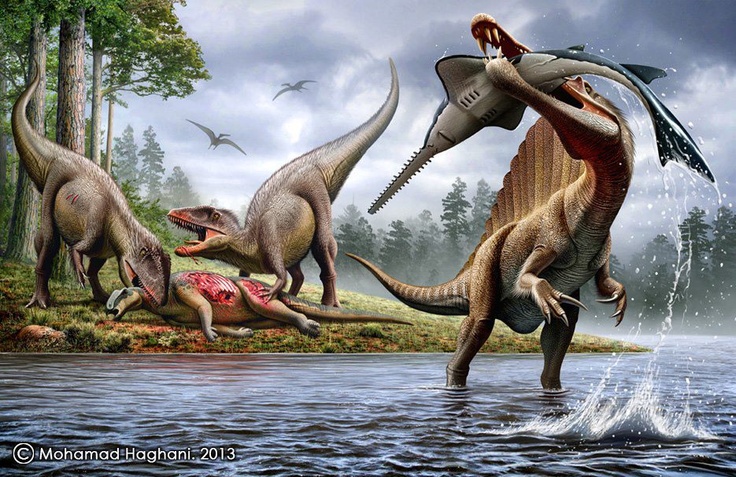Paleontologists led by Dr Pablo Gallina of CONICET in Buenos Aires have discovered a new sauropod dinosaur that lived in what is now Argentina during the early Cretaceous period, between 146 and 100 million years ago.

This is an artist’s impression of Leinkupal laticauda and smaller carnivorous dinosaurs. Image credit: © Jorge Antonio Gonzalez.
This long-necked herbivorous creature has been named Leinkupal laticauda.
The generic name, Leinkupal, is derived from the Mapudungun (the language of the Mapuche Native American nation that inhabits northwestern Patagonia) words ‘lein’ (vanishing) and ‘kupal’ (family).

The species name, laticauda, is derived from the Latin words ‘lati’ (wide) and ‘cauda’ (tail), referring to the dinosaur’s broad tail evidenced by the lateral extension of the transverse processes in proximal caudal vertebrae.
Leinkupal laticauda belongs to the family Diplodocidae, a group of sauropod dinosaurs recorded in late Jurassic strata from North America, Europe, Africa, and well known for their large bodies, as well as extremely long necks and tails.
According to a paper published in the open-access journal PLoS ONE, Leinkupal laticauda is the first diplodocid discovered in South America, the second confirmed diplodocid for the ancient continent Gondwana and the youngest record of Diplodocidae in the world.
Its fossil bones were found in Bajada Colorada Formation of Neuquén Province in Patagonia, Argentina.

Caudal vertebrae of Leinkupal laticauda. Image credit: Gallina PA et al.
Though the bones are fragmentary, Dr Gallina and his colleagues found differences between Leinkupal laticauda and other diplodocid species from North American and Africa in the vertebrae where the tail connects to the body.

The paleontologists estimate that Leinkupal laticauda could reach 9 meters long.
“Since Leinkupal laticauda apparently lived much later than its North American and African cousins, its existence suggests that the supposed extinction of the Diplodocidae around the end of the Jurassic or beginning of the Cretaceous period didn’t occur globally, but that the clade survived in South America at least during part of the Early Cretaceous,” they said.
Source: sci.news





